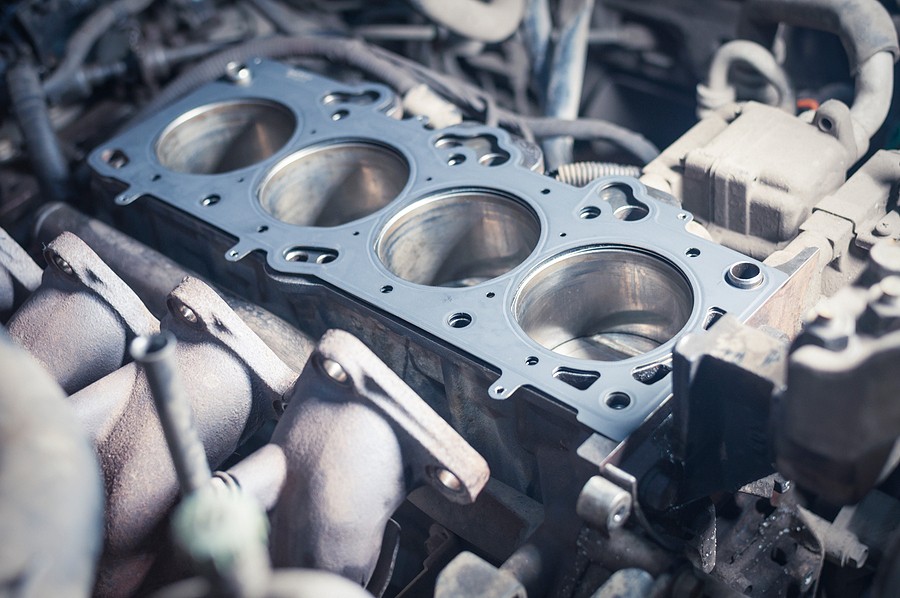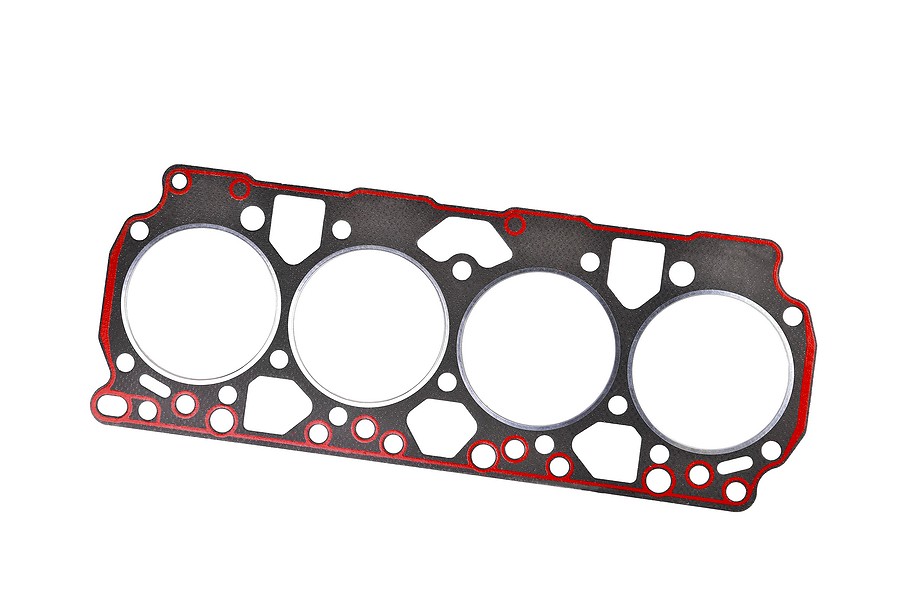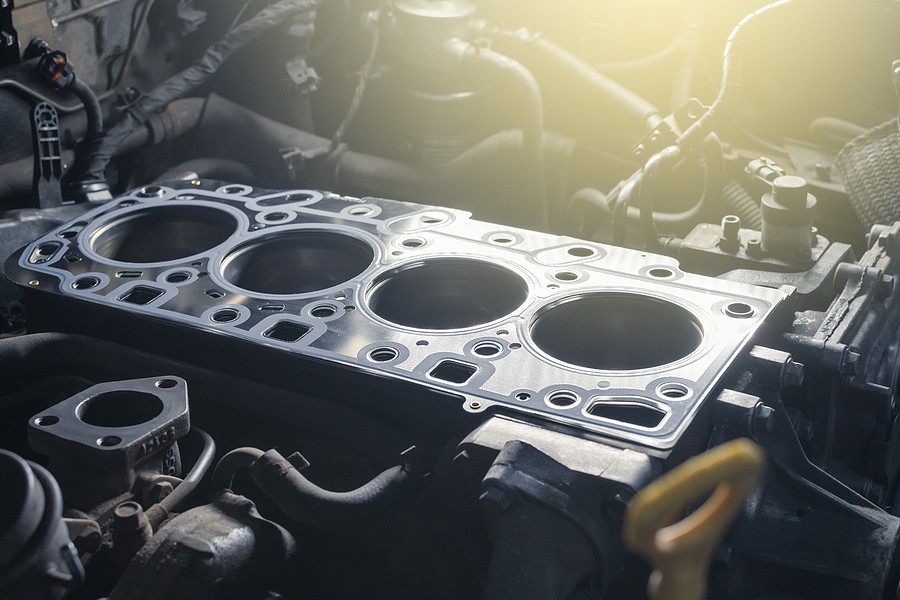If you're wondering “how to know if the head gasket is gone,” below are 12 key symptoms:
- Engine overheating
- White smoke from the exhaust
- Bubbles in the coolant reservoir
- Creamy oil cap
- Coolant loss
- Visible coolant leak
- Reduction engine performance
- Engine misfiring
- Weird exhaust smell
- Troubles with the engine spark plug
- Loss of compression
- Air coming out of the radiator
The head gasket is one of the most critical components in any vehicle. It is placed between the engine cylinder and the remaining components. It is responsible for preventing fluids from entering the cylinders and hot gases from leaving the cylinders to surrounding components.
With this position, the head gasket is exposed to many extreme conditions like extreme heat and other conditions that might impact its quality and damage it over time.
When the head gasket fails, it results in many symptoms requiring immediate attention from us drivers to just the problem before it gets more complicated and requires thousands of dollars on repair.
This article highlights these twelve key symptoms of a failing head gasket to help you answer the question, “How to know if the head gasket is gone?” Remember that these symptoms might be shared with other culprits in the vehicle, so you have to consult your mechanic to confirm the faulty component.
How to know if the head gasket is gone?
Since the head gasket is a vital component in your engine, you need to watch for any potential symptom that could help you detect any minor problems in the head gasket so we can fix it before it fails.
The following list provides the 12 most common symptoms to help you answer the question, “How do you know if the head gasket is gone?” Remember that some of these symptoms might indicate that the head gasket is beyond repair, but it's still important to monitor for these symptoms and check with your mechanic as soon as possible.
1- Engine overheating
The first thing you'll notice when the head gasket is gone is an engine overheating. As indicated, the head gasket sits between the cylinders and the remaining engine compartment. When the head gasket is gone, it could lead to the hot gases leaving the cylinders, impacting the overall engine to make it very hot.
You will notice engine overheating by looking at the temperature gauge on the dashboard or looking for any signs of smoke or steam coming out of the engine compartment or from beneath the hood.
2- White smoke from the exhaust
When the head gasket has gone completely, it will result in mixed fluids in the engine cylinders. When this happens, the exhaust smoke will come in a weird, typically strong white color.
The exhaust smoke should not have any visible color, especially if you're driving a more modern car. If you're driving an older vehicle during the morning, you'll notice some white smoke, but if you feel that the white smoke is consistent and happening every time you turn on the engine, it might mean that the head gasket is gone.
3- Bubbles in the coolant reservoir
The head gasket impacts the engine compartment and all the systems interacting with it. In other words, you'll feel that the coolant reservoir has some bubbles when it shouldn't because this indicates that some air seeped through the cooling system and got into the reservoir.
Remember that bubbles in the coolant reservoir do not necessarily mean that the head gasket is gone because it could be linked to other issues that allow air to seep through the pipes and reach the reservoir.

4- Creamy oil cap
Another quick check to help you detect whether the head gasket is gone is by looking at the oil cap. If you feel that there is a milkshake type of substance or a creamy oil, you'll notice that this is a clear sign indicating that the head gasket is in trouble.
Depending on the severity of the oil substance change, the head gasket might still be in some shape that could help you fix it before it's gone completely. You'll have to check for all the other components and confirm with your mechanic that this head gasket is repairable.
5- Coolant loss
When the head gasket is gone, you might notice that the coolant is reduced significantly. This might not be associated with a visible coolant leak which is even more complicated because it means that something is internally happening; the cool is getting mixed in the engine cylinders without a visible leak outside the car.
6- Visible coolant leak
In addition to that reduction in the Coolant level without any visible leak, you might also need to notice some visible coolant leak underneath the location of the head gasket. This could mean that the coolant got into areas with very bad seals and got to seep through and leave the vehicle.
Whenever you notice any coolant reduction and visible coolant leaks, you must try to pull over and stop the vehicle whenever possible because this problem is very severe and regardless of the cause of it, whether it's related to the head gasket or not.

7- Reduction of engine performance
If you start dealing with all these complicated problems, you'll notice that the engine is not performing as it should. In other words, there might be significant engine performance reduction, which could be linked to a failed or damaged head gasket and something else.
8- Engine misfiring
Engine misfiring is not a surprise when dealing with a field head gasket. Therefore, if the engine is throwing some errors or warning signs indicating some misfire, keep an eye on the head gasket and make sure that your mechanic checks it when inspecting the vehicle.
9- Weird exhaust smell
In addition to their strange exhaust color, you might notice also another smell coming out of the exhaust that could be strong or different than what it should before. Therefore, you shouldn't ignore any smells that are not normal for you when it comes from the vehicle because they might indicate an internal issue related to many components.

10- Troubles with the engine spark plug
When the head gasket fails, it damages the entire components and the engine, especially if you leave it for a long time. For example, you notice that the spark plugs are not operating as they should because they got exposed to different types of foods that they're not supposed to, impacting their performance.
11- Loss of compression
Since the head gaskets seal the cylinders, when it fails, it causes a reduction and loss of the complete compression needed for engine energy generation. In other words, the engine will not be able to generate any energy, and depending on the severity of the problem, the vehicle might stop operating completely.
12- Air coming out of the radiator
Finally, when the head gasket fails and when it gets to the point where it lacks some of the components in the cooling system, you might notice that there's some air coming out of the radiator. This shouldn't be the case because the radiator should be in a closed system that's not exposed to the air and indicates a severe problem that you must take care of.

How much does it cost to replace a blown head gasket?
Unfortunately, if you confirm that the head gasket is already gone, you'll have to replace it. And the other thing to keep in mind is that repair costs for replacing the head gasket are not cheap and could range from $1000 to $2000. This is at the higher end of repair costs, especially if your vehicle is not worth that amount.
That's why automotive experts typically recommend that you evaluate the mean pros and cons of fixing the vehicle or not. Many vehicle owners sometimes give up on their vehicles when the head gasket fails.

How to know if the head gasket is gone?? Final Thoughts
Since the head gasket is a critical component setting between the cylinders and the remaining parts of the engine, it must always operate and be in good shape to prevent significant problems.
Over time use, the head gasket can fail, and it's the owner's responsibility to keep an eye on it to confirm that the vehicle is operating properly. You could look for some symptoms to help you determine whether the head gasket is gone so you can act immediately and replace it when needed.
This article highlighted the twelve common symptoms, including the engine overheating, the smoke coming out of the exhaust, the bubbles in the radiator, etcetera. Whenever you notice any of these symptoms, consult your mechanic to have him replace the head gasket as soon as possible.
If you're interested in similar posts, we highly encourage you to visit our blog by clicking here!



